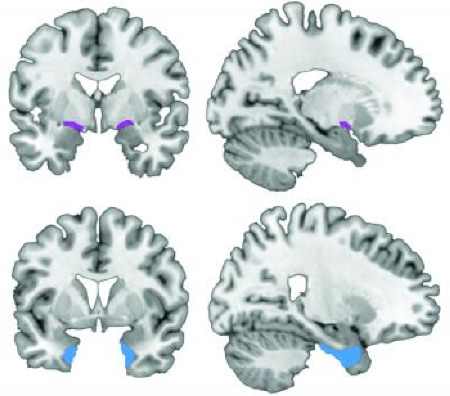Human Imaging Study Identifies Novel Origin of Alzheimer’s Disease

Front and side views of two regions of interest for the origins of Alzheimer's disease — the basal forebrain, top, and the entorhinal cortex, bottom.
Improving diagnostics that can detect earlier biological signs of Alzheimer's disease is critical for prevention strategies and therapeutics. Using magnetic resonance brain images from the Alzheimer’s Disease Neuroimaging Initiative database, neuroscientists collaborating from around the world identified a new point of origin for Alzheimer’s disease. Previously, scientists thought the disease starts in the entorhinal cortex region of the brain. However, this two-year study of older adults with a wide spectrum of cognitive status (from normal to Alzheimer’s dementia) suggests that neurodegeneration actually initiates in the basal forebrain area and predicts subsequent degeneration in the entorhinal cortex. These two brain structures form part of an essential brain pathway that is important for the learning of new information. This human-based approach offers a new area of investigation to improve early assessment for the development and progression of Alzheimer’s disease.
References
- Schmitz TW, Nathan Spreng R; Alzheimer's Disease Neuroimaging Initiative. Basal forebrain degeneration precedes and predicts the cortical spread of Alzheimer's pathology. Nat Commun. 2016;7:13249. doi: 10.1038/ncomms13249.








